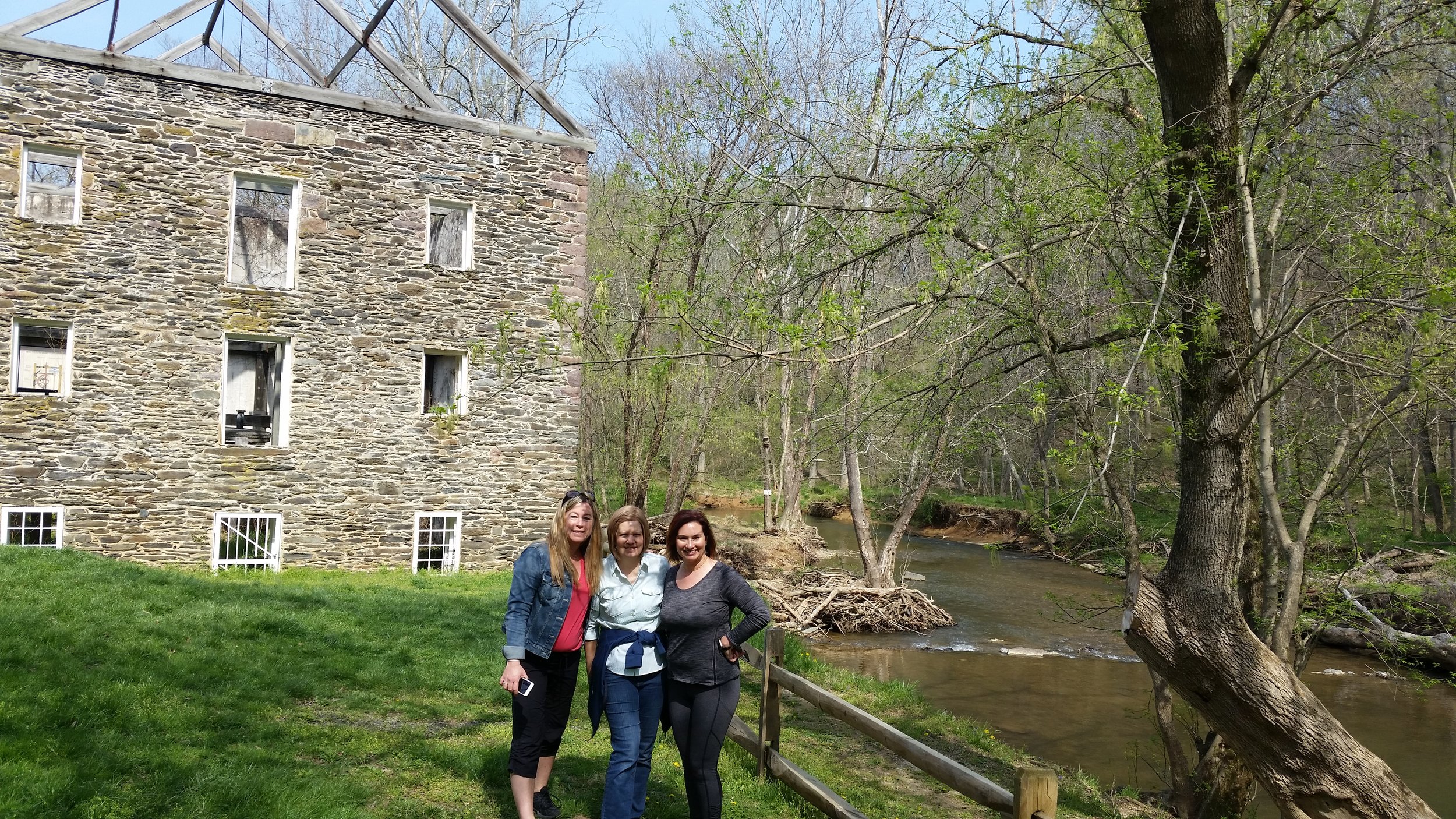
History of Seneca Mills
.
"A History of Early Water Mills in Montgomery County" by Eleanor M.V. Cook;
"Mills on the Seneca and Their Tributaries" by Doris B. Cobb
Seneca Creek was almost the only source of power for the first 150 years of settlement. In 1795, Middlebrook Mills was up for sale and a selling point was Seneca Creek, described as "the most powerful consistent stream in the county." Water power drove grist mills, saw mills, bellows for forges and fulling mills.
Fulling mills dealt with processing woolen cloth. "In those days, home woven woolen cloth, as it came off the loom, was dirty and of loose weave. It needed fulling to remove the grease and compact the fibers before being useful as blankets or clothing." "In a prolonged operation, the rough-woven cloth was soaked in a special solution of fuller's earth, an absorbent clay which took nearly all the natural grease from the wool. The mill was used to pound the cloth by raising and letting fall a series of hammers as the cloth was moved and turned in soapy water.”
Grist mills used a pair of millstones to grind grains such as buckwheat, rye and corn. There were two types of millstones. Country stones were quarried locally and used for coarse flour. Cullin stones, German millstones from Cologne and French Burrs (Buhrs), made of quartz, were used for fine wheat flour. A mill owner advertised, in 1795, that he had burrs. A fine example of a millstone may be seen at the Clopper Mill ruins.
Montgomery County had 44 mills before 1800. Eight of them were on Seneca Creek and its tributaries. Perhaps the oldest was at Seneca Ford, near the mouth of Seneca Creek. It already existed by 1732.
By the 1840s the land in Montgomery County had become worn out. New settlers were headed for the rich soils in Tennessee and Kentucky. It was only with the opening of the Baltimore and Ohio Rail Road and the introduction of the use of fertilizers that farming was reinvigorated. The use of lime, bone, phosphates and other fertilizers allowed significant increases in yields of wheat and Indian corn. In 1850, Montgomery County listed 51 mills: 6 flour, 25 grist, 15 saw, 1 bone, 2 clover, 1 paper, 1 sumac.
A survey of Seneca Creek mills has found 19 mills along Seneca Creek and its tributaries.
Grist mills continued to do a lively business into the early 1900s grinding wheat. Montgomery County was once a highly intensive wheat growing region. Wheat was grown more intensively in central Maryland than anywhere else in the USA except Kansas and South Dakota. The milling business declined by WWI and few mills were in operation after 1925.
Seneca Ford (Tschiffely Mill) 1732 - 1931 on Seneca Creek
Black Rock Mill 1815 - 1920s on Great Seneca Creek
Hoyles Mill ??? - 1893 on Little Seneca Creek
Clopper Mill (Maccubbin's Mill) ca. 1768 on Great Seneca
Long Draught Mill (Hutton's Mill) pre-1850 on Long Draught Branch
Middlebrook Mills (Good Will Mills, Faw's Mill) ca. 1795 on Great Seneca Creek
Walker's Mill 1877 - 1932 on Whetstone Branch, a tributary of Great Seneca Creek
Watkins Mill ca. 1783 - 1908? on Great Seneca Creek
Davis Mill ca. 1783 on Great Seneca Creek
Ford's Mill ca. 1825 on Wildcat Branch above Davis Mill
Goshen Mill (Crow's Mill, Riggs Mill) ca. 1774 - 1890 on Goshen Branch, Great Seneca Creek
Waters Mill ca. 1810 - 1895 on Little Seneca Creek
Wolfs Cow (Darby Mill) ca. 1783 on Bucklodge Branch, which joins Little Seneca Creek to form Seneca Creek
Lost Britches (Pyles Mill) ca. 1799 near a feeder stream to Ten Mile Creek, a tributary to Little Seneca Creek
Veirs Sawmill on Bucklodge Branch
Magruder Sawmill on Great Seneca Creek
Samuel Darby Mill (Oakland Grist and Sawmill) on Great Seneca Creek
Dawson's Mill on Dry Seneca
Midford Mill on Dry Seneca